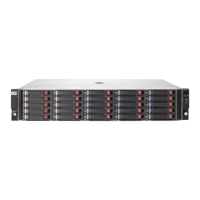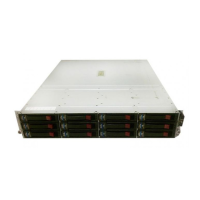CAUTION:
Plastic tie wraps can damage the internal fiber core if over-tightened.
• Cable symmetry.
When connecting cables, use similar slot and port numbers. For example, connect HBA 1 to SAN
fabric 1, HBA 2 to SAN fabric 2, and so on.
Consider the following when configuring your SAN:
• Fibre Channel switch configuration, page 420
• Server setup, page 420
• Storage system configuration, page 420
Fibre Channel switch configuration
HP Fibre Channel switches are preconfigured with compatible parameter settings. You must configure
each switch with a unique domain ID.
Server setup
When setting up servers:
• For each platform or operating system type, use only HP StorageWorks-supported drivers and
configuration settings.
• Ensure that the servers have the supported operating system versions and all required updates.
• Use an alphanumeric naming scheme for multiple servers of the same type, such as WIN01 and
WIN02 for Windows servers.
Storage system configuration
When configuring storage systems:
• Use the storage map created in the planning phase to configure each storage system.
• Verify server-to-storage connectivity, and access one server at a time.
• When defining storagesets, disable all access first, and then enable the desired access.
• Define storage system connection names that are consistent with zoning alias names. Use consistent
names for storage port and controller connections. Use a naming scheme that represents the
physical connectivity.
Storage-based LUN masking
Use storage-based LUN masking to allow or prevent access to storage system LUNs from one or more
servers.
• For HP EVA storage systems, use SSP.
• For HP XP storage systems, use LUN Configuration and Security Manager XP.
• For HP VA storage systems, use Secure Manager VA.
During SCSI initialization, the server queries the storage port for a list of available LUNs and their
properties. The storage system compares the WWN of the requesting HBA to the defined zone list
Best practices420

